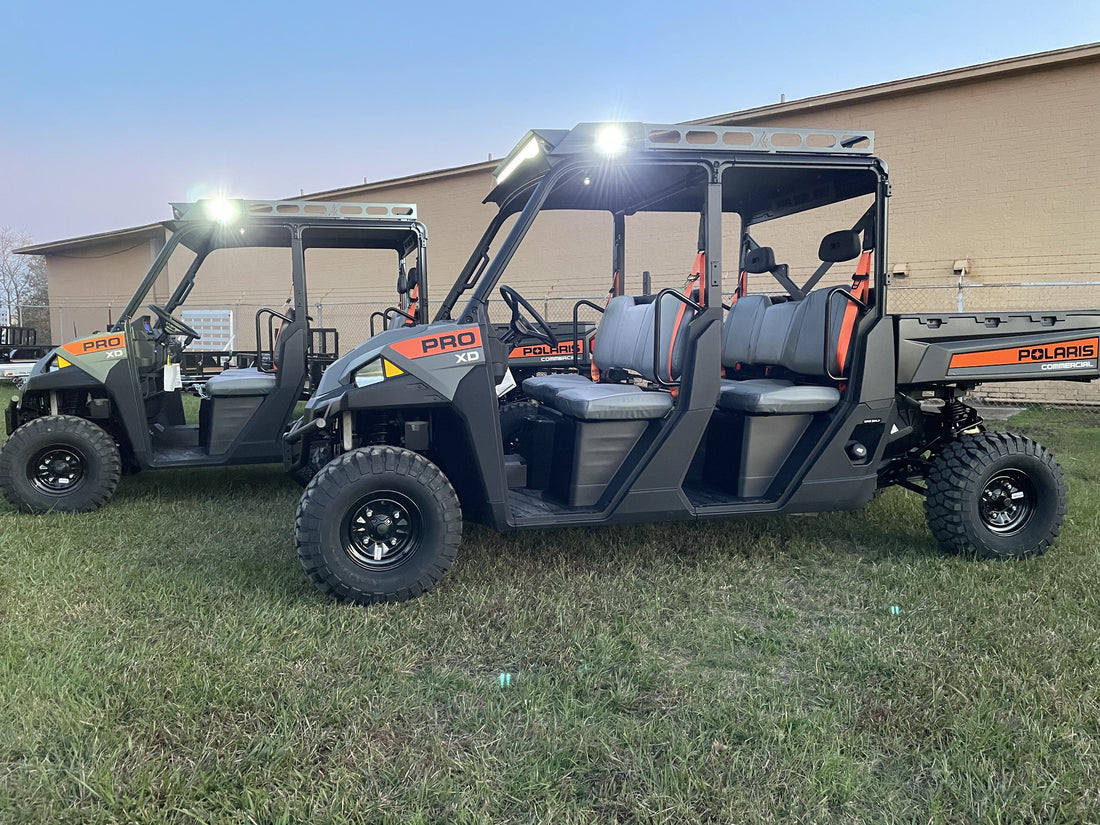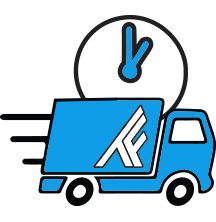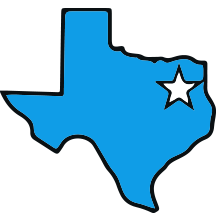Do you know the difference between an all-terrain vehicle and a utility task vehicle? If not, you are not alone! Many people do not know the difference or are unsure which one is right for them. In this blog post, we will discuss the key differences between ATVs and UTVs so that you can make an informed decision about which vehicle is best for you.
What Is An ATV?
ATV stands for an all-terrain vehicle or a four-wheeler designed for off-road driving. ATVs typically have four wheels, although some models have six to eight wheels. They are usually smaller than other off-road vehicles, such as trucks and jeeps, making them more maneuverable.
ATVs are popular for both recreational and practical purposes. Many people enjoy trail riding, either alone or with friends. ATVs can also be used for farming or other tasks, such as hauling heavy loads or pulling trailers. In recent years, the popularity of all-terrain vehicles has grown substantially, and they are now one of the most popular off-road vehicles.

Characteristics
- Steering: Riders grasp onto the handlebars to steer. A thumb or twist throttle regulates the speed.
- Seating capacity: ATVs are designed for single riders only.
- Wheels: Four-wheel vehicles are known as ATVs. Since 1988, the sale of three-wheeled ATVs has been prohibited in the United States.
- Cabin: Four-wheelers are typically open-air vehicles, although cab enclosures are permitted.
- Speed: ATVs have a maximum speed of 85 mph.
Safety Features
ATVs do not have any safety features attached, so we recommend wearing additional safety gear such as a helmet, protective boots, and clothing to ensure safety.
Uses
An ATV is designed for fun and can travel easily over any terrain, making it ideal for exploring.
Pros And Cons
One of the best pros is that most of the time, ATVs are cheaper than UTVs. ATVs are also easy to drive, especially if you know how to drive a motorcycle or snowmobile.
Because they are smaller than UTVs and lack tops, ATVs are easier to get on and off, even on rugged trails. The smaller size might bother you if you like to ride with others. Even though your ATV only has room for one rider, you can still go on group trail rides.
What Is An UTV?

A utility task vehicle, or UTV, is a small, off-road vehicle designed to handle challenging terrain. UTVs typically have four wheels and come equipped with UTV tires that provide superior traction.
Most UTVs also have a roll cage and seatbelts to protect occupants in case of a rollover. While UTVs are often used for utility purposes, such as hauling supplies or equipment, they are also famous for recreational use.
Many people enjoy taking their UTVs off-road to explore the wilderness or simply to enjoy the thrill of driving on challenging terrain. The average UTV can seat up to four people and has a top speed of around 45 miles per hour.
UTV Characteristics
- Steering: Driving a UTV (utility task vehicle) is similar to driving an automobile. It has a steering wheel and foot pedals for controlling speed.
- Seating capacity: UTVs usually have room for more than one passenger and can accommodate up to four people.
- Wheels: Some UTV models have four wheels, but others have more to meet specific needs.
- Cabin: The sides, top, and back of UTV Rucksacks have little or no protection. A cabin or bars are added for additional safety.
- Speed: While a UTV's maximum speed may clock in at 85 mph, it is usually still slower than its ATV counterpart.
Safety Features
UTVs have seat belts and a cabin or bars to protect you during a rollover. Although these features are included, we recommend wearing helmets and other protective gear while operating a UTV.
Uses
UTVs have increased storage space compared to other vehicles, making them ideal for transporting materials. In addition, since UTVs seat more than one person, they are perfect for off-roading with family and friends.
Pros And Cons
UTVs may have several benefits, such as additional passenger capacity, more customization options, and enhanced safety features like seat belts, a windshield, and a roll cage.
These added components result in UTVs possessing a greater price than ATVs, which might be a disadvantage. You can enjoy rides with your pals by your side while still having a practical work vehicle to transport materials or explore your yard.
Gear You’ll Need For ATVs And UTVs
It is critical to think about safety and protection. Before going out on the trails, you will need certain equipment.
- Protective clothing: While riding on trails, you should wear long sleeves, long pants, and over-the-ankle boots. Gloves are also necessary since a rock to the knuckle is not desirable.
- Helmets: No one plans on getting into an accident, but they do happen. That is why wearing a high-quality ATV helmet is critical to protect your head from injuries. Not only should helmets be comfortable and durable with the proper fit, but they should also be approved by the Department of Transportation (DOT) and, in some instances, certified by SNELL.
- Goggles: Wearing motocross goggles is vital to safeguarding your vision. When you are riding, there are a lot of potential risks to your eyes from wind, rocks, dirt, dust, and branches.
- Toolkit: A simple equipment kit is required for everyone at some point or another. A Swiss Army knife, wrenches, duct tape, a trail map, a tire pressure gauge, and a multifunctional screwdriver are all excellent starting points. Tire plugs, a vise grip, an air pump, and anything else to get you back on the trail are other possible items.
- First-Aid kit: A small first-aid kit is always helpful to have on hand. Yours should include bandages, ointment, gauze, and more to take care of any cuts or injuries until you receive proper medical attention.
- Winch: Winches are a great addition to any ATV. Winches help you create a force that pulls one object towards another using a rope or cable, and they are beneficial when you need to get yourself out of tough situations. For example, if you are stuck somewhere, attaching a winch to a tree can give you the power to get yourself out instead of waiting for someone to help you.

Final Thoughts
It is up to you whether you want an ATV or UTV for your off-road escapades. The main factors in this decision are your confidence levels in operating the vehicle and the activities you intend to do with it.




